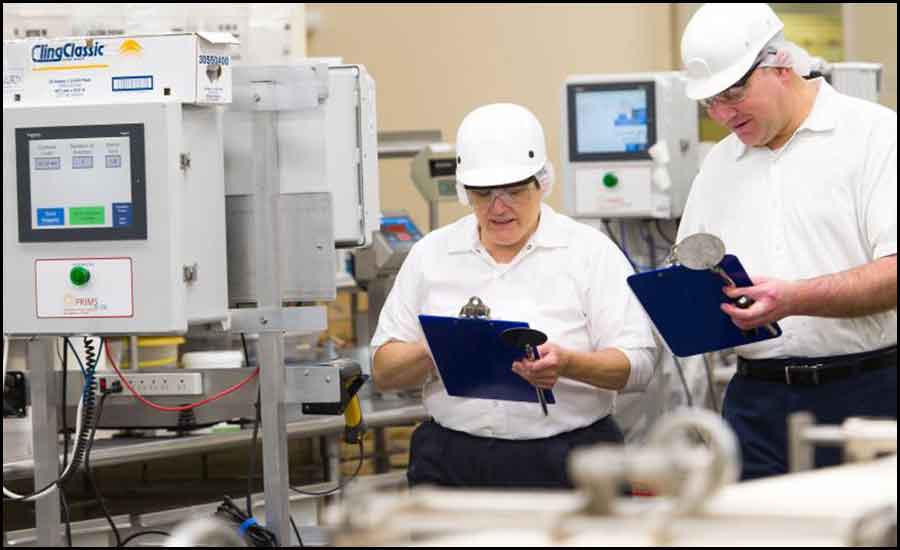How Packaging Affects Cold Food Safety

By selecting the right audit scheme, manufacturers can help ensure the safety and quality of their product and its packaging through its demanding journey. Image courtesy of AIB International.

Andrea Niemann-Haberhausen is a consultant for AIB International.


Demographic changes and consumer behavior are driving increased demand for refrigerated and frozen foods. Even the pandemic has had an influence on their consumption. As many restaurants have closed or reduced their seating, more shoppers are reaching for frozen pizza, ice cream and other foods they can enjoy at home. This makes it increasingly important to ensure not only the safety of the food being produced, but also its packaging.
Almost every refrigerated or frozen food product must be stored, transported, and sold with suitable packaging. For manufacturers and retailers, that packaging must enable damage-free transport, ensure stability, be easy to stack, and be lightweight to keep transportation costs low. For consumers, packaging must be easy to handle and practical, be environmentally friendly, protect the food from damage, and must not release harmful substances into the food. The right packaging also makes these products easier to promote, merchandise, and for consumers to select.
These diverse demands require a variety of different packaging materials. Typical materials can include plastic, glass, paper, and cardboard, as well as natural materials like cork, jute or cotton, and aluminum or tinplate. Many solutions even call for varied combinations of these and other materials. Walking the grocery aisles, consumers can choose from a wide range of packaging material that includes menu trays, PE bags, steamer bags for vegetables, traditional waxed cardboard packages, and cans for beverages.
But too often, the importance of packaging in regard to its food safety benefits can be an afterthought. Food packaging material must be appropriate to the extraordinarily high sensitivity of prepared foods, as these foods can be exposed to numerous opportunities for spoilage from the time they are packaged until they are prepared by a consumer. Packaging material keeps harmful environmental influences such as light, oxygen and moisture away from the product, while reducing potential contamination and damage. This reduces the spoilage caused by microorganisms, as well as flavor changes and vitamin loss. Packaging also limits foreign odors and helps maintain freshness for an extended period.
In addition, packaging communicates important information to the consumer, including allergen statements, ingredients and nutritional facts, and the best by date. In this way, packaging helps ensure the quality and safety of food products.
For refrigerated and frozen foods, temperature requirements and humidity can prompt additional challenges. In many cases, the packaging material must withstand not only cold temperatures, but also the microwave oven that allows for fast and convenient preparation. This presents yet another food safety consideration, as heating food in the package can lead to migration from the packaging material into the food. To ensure food safety in these conditions, the demands on packaging are even higher.

By selecting the right audit scheme, manufacturers can help ensure the safety and quality of their product and its packaging through its demanding journey. Image courtesy of AIB International.
Because food packaging materials are also food contact materials, they must be inert, which means that no substances that would impair food safety may be transferred from them to the food. Accordingly, these materials must be manufactured in accordance with what are known as "good manufacturing practices," or GMPs. As a result, their production must be carried out within the framework of documented quality assurance systems and according to defined specifications, which are commonly referred to as certification standards.
Depending on a variety of factors, including the country of destination of the food being packed, and often the demands of the retailer, these standards can be very diverse. Choosing the right standard and audit scheme for the operation can help ensure that food safety and quality programs meet internationally recognized requirements, which in turn increases the chances of doing business within the food industry.
When assessing the different standards to help prove that the implemented quality management system is sound and strong, it makes sense to choose one of the GFSI benchmarked schemes. It is important to emphasize that only those programs with an on-site component are currently benchmarked.
The four programs in place are IFS PacSecure, BRCGS, SQF, and FSSC 22000. Both IFS and BRCGS under the accreditation of ISO 17065 have a strong focus on quality, food safety, and legality. The SQF code also under ISO 17065 has three certification levels. Level 1 is entry level and for low-risk products only. Level 2 is GFSI benchmarked, focused on food safety and is the most often used SQF Level, while Level 3 also incorporates quality. FSSC 22000 targets primarily food safety and legal compliance. Out of the four, FSSC 22000 is the only standard under the management systems’ accreditation without a graded result. IFS PacSecure and BRCGS do have a straight-forward one step certification process in place, while SQF and FSSC 22000 each require a two-stage audit process.
The importance of packaging for refrigerated and frozen foods cannot be overlooked. The standard that best suits the needs of the packaging manufacturer largely depends on the customer they are supplying to and the challenge the company is willing to take on. By selecting the right audit scheme for the operation, manufacturers can help ensure the safety and quality of the product and its packaging through its demanding journey.
Looking for a reprint of this article?
From high-res PDFs to custom plaques, order your copy today!








